Pinnatella is a genus of moss in family Neckeraceae.

Hypnaceae is a large family of moss with broad worldwide occurrence in the class Bryopsida, subclass Bryidae and order Hypnales. Genera include Hypnum, Phyllodon, and Taxiphyllum.
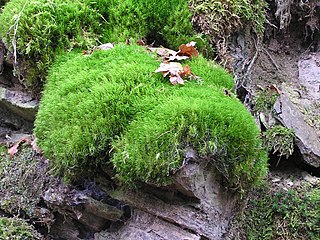
Dicranaceae is a family of haplolepideous mosses (Dicranidae) in class Bryopsida. Species within this family are dioicous. Genera in this family include Dicranum, Dicranoloma, and Mitrobryum.

Barbula is a genus of mosses in the family Pottiaceae.

Ditrichum is a genus of haplolepideous mosses (Dicranidae) in the family Ditrichaceae.

The Hookeriaceae are a family of mainly tropical mosses of the order Hookeriales.
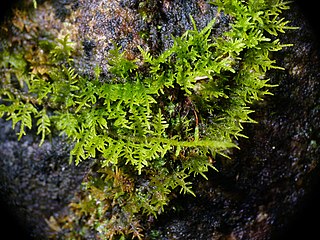
Thuidiaceae is a family of mosses within the order Hypnales. It includes many genera but the classification may need to be refined. The core genera are Thuidium, Thuidiopsis, Pelekium, Aequatoriella, Abietinella, Rauiella, Haplocladium and Actinothuidium form a clade but others currently placed in the family may belong elsewhere.
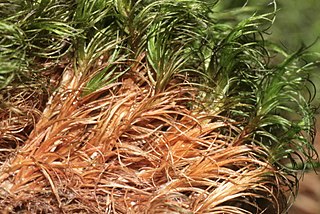
Campylopus is a genus of 180 species of haplolepideous mosses (Dicranidae) in the family Leucobryaceae. The name comes from the Greek campylos, meaning curved, and pous, meaning foot, referring to the setae which curve downwards.

Taxiphyllum is a genus of mosses in the family Hypnaceae.

Pohlia is a genus of mosses in the family Mniaceae, found on all continents including Antarctica. Some of its species are native to multiple continents. The center of diversity is the Northern Hemisphere.

Didymodon is a genus of mosses belonging to the family Pottiaceae. The genus has a cosmopolitan distribution.

Plagiothecium is a genus of moss belonging to the family Plagiotheciaceae. It has a cosmopolitan distribution.
Campylium is a genus of mosses belonging to the family Amblystegiaceae.

Cirriphyllum is a genus of mosses belonging to the family Brachytheciaceae. The species of this genus are found in Eurasia and North America.
Vesicularia is a genus of mosses belonging to the family Hypnaceae.
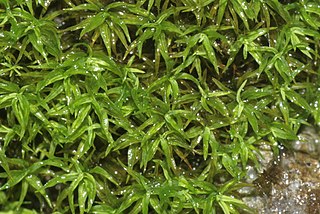
Trichostomum is a genus of mosses belonging to the family Pottiaceae.
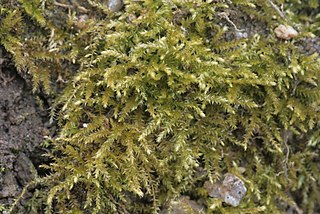
Oxyrrhynchium is a genus of mosses belonging to the family Brachytheciaceae. The genus has a cosmopolitan distribution.
Herzogiella is a genus of mosses belonging to the family Hypnaceae.
Catagonium complanatum is a species of moss from the genus Catagonium. It has discovered by Jules Cardot and Viktor Ferdinand Brotherus in 1925. Before the name Catagonium complanatum, it had a basionym named Calliergonella complanata by Cardot & Broth.
Catagonium serrulatum is a species of moss from the genus Catagonium. It was described by Viktor Ferdinand Brotherus in 1925, from material collected in Panama.














